Recommended

About us | Advertise with us | Contact us

Back to the future – learning lessons from our rail’s past
Posted: 19 February 2018 | Gordon Buchan - WYG | 1 comment
The UK Transport Secretary’s recent comments on the potential use of hydrogen powered trains on the UK rail network is interesting given some of the historical parallels on the Great Western franchise. Gordon Buchan, Director of Transport Planning, WYG, believes the railway’s past can offer advice for today’s implementation of new technology.
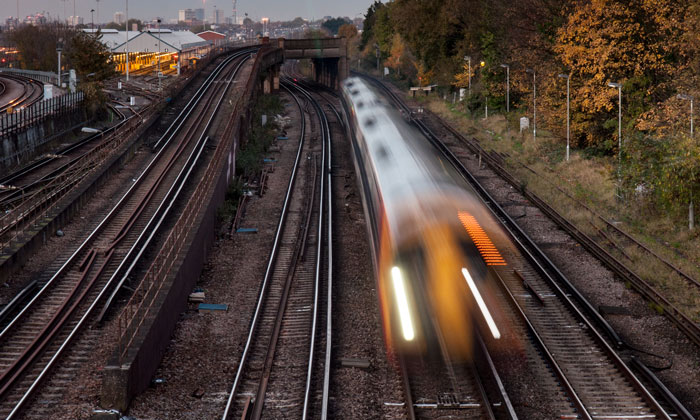
The Great Western Railway (GWR) was a pioneer in the development of railways in England and Wales. The engineering geniuses, Isambard Kingdom Brunel and Daniel Gooch, helped shape and develop elements of railway engineering that are still current today.
It is certainly true that there is nothing new in history, however learning from the past can help steer a course in the present and future. So, the question remains, what do the experiences of the past tell us with respect to new locomotive power on the Great Western routes?
When Brunel and Gooch were developing the GWR network, they were pioneers in the field. They used the available technology and materials to help engineer a new form of transport, developing the broad-gauge railway track network for their line, while the rest of the country used what became the Standard gauge of the Stephensons. At seven feet and one quarter inches, the broad-gauge railway was significantly more stable than the Standard gauge at four feet and eight and a half inches. If this had been installed across the country, we would have had more substantial trains that could carry more goods at faster speeds. Unfortunately for the GWR, their considered technical approach was overlooked by the multitudes of other lines being built throughout the UK, that had all adopted the Standard gauge. In May 1892, the last broad-gauge service departed Paddington for the west. Broad-gauge was a Betamax system in a VHS world and the GWR lost in refitting the network to the now Standard gauge of track.
In the early 1900s the GWR developed its railway and employed George Jackson Churchward as its Chief Mechanical Engineer. He developed a new range of locomotives based upon the latest technology and best practices and created a modern and standardised fleet that could cope with the demands placed upon it.
The genius in his design was standardising common components. With a large pool of common parts, it was easy to fix and turn around locomotives during overhaul, improving efficiency and overall mileage.
Churchward’s design philosophy was entirely correct and his influence spread to other firms, resulting in better efficiency and improved performance across the UK. He had reviewed what was on offer in the US and Europe, tested it, refined it and then produced a standardised product that he could deploy to provide a reliable and high use service.
Following World War Two, the GWR was nationalised into British Railways (BR). In the late 1950s, the Western Region of BR decided that it wanted to explore the latest diesel-powered locomotives from Germany. The German designs used Diesel Hydraulic power and had a higher power to weight ratio when compared to Diesel Electric locomotives that were under trial across the other regions of BR.
The use of the units in Germany looked promising and so the Western Region ordered several different classes of locomotive, despite the rest of BR going firmly down the Diesel Electric route.
The Diesel Hydraulic locomotives did not have a long-life span. Like many early British diesel locomotives, new ideas, new construction processes, operating conditions and new technologies did not blend well and in the late 1970s the last of the hydraulics were withdrawn. The unique nature of their design, lack of wider UK knowledge of the technologies within them and the advances in Diesel Electric traction sealed their fate.
We should use the parallels from history to produce important lessons for the introduction of hydrogen powered trains today.
The UK should wait and see all the results of the tests currently being undertaken in Germany. There is no need for the UK to be first here – waiting will allow the railways to review the technology in full without having the abortive costs associated with being a test pilot.
The UK should fully consider where these new trains should be deployed. Restricting them to a small area in small numbers will not make their use efficient or practical. Based upon the test runs, we need to review what the best conditions are for the units to operate in. Do we deploy them to the Great Western franchise or would they be better used in the Far North Line or perhaps on the Trans Pennine route or even other lines where overhead electrification would be difficult or expensive?
How many should be ordered? A small number will make the units non-standard and like their predecessors, the Diesel Hydraulics, they could become a small part of the picture and therefore not a cost-effective contribution to the rail fleet. For their deployment to be effective, careful consideration of how many and where they will be serviced needs to be addressed.
How does the fuel and technology cope in a range of conditions and how can it be safely and effectively maintained? New fuel sources require new techniques of handling and operating. When steam was replaced, it became quickly apparent that the old running sheds would not be fit for purpose. The Government and rail industry will need to consider what conditions the new fuel requires and how this will be maintained going ahead.
Can the new vehicles use existing standard fittings such as bogies and suspension to help reduce costs? Standardisation with more modern existing units may make the vehicles more reliable, longer lasting and more flexible.
Can the technology be feasibly integrated into the more constrained UK loading gauge? Whilst the test vehicles in Germany operate within a larger loading gauge (although on the same track gauge), UK hydrogen train units will need to be slightly smaller to fit within the existing infrastructure. There is likely to be a key design issue to consider how this can be packaged safely and effectively into a financially and operationally viable vehicle.
The history of railways gives several pointers to how and how not to introduce new technology. The rail industry and Government would be well advised to look to the past before it looks to the future.
Related topics
Infrastructure Developments , Rolling Stock Orders/Developments
Related organisations
Related regions.
United Kingdom
Related people
Gordon Buchan
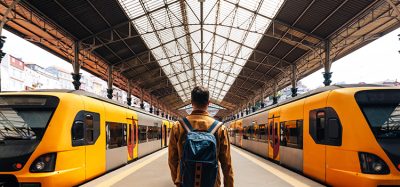
Digital Twins 101: Enhancing workflow efficiency and cost-effectiveness through advanced simulation technologies
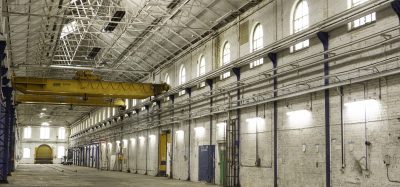
Gibson’s Engineering reopen St Rollox depot, ‘The Caley’
By Emily Budgen
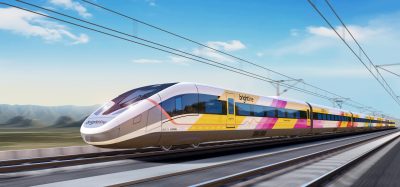
Brightline West selects Siemens to manufacture high speed rail train sets
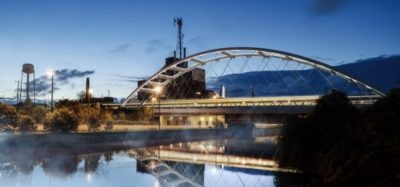

Metrolinx: New line will see nearly 400,000 daily boardings
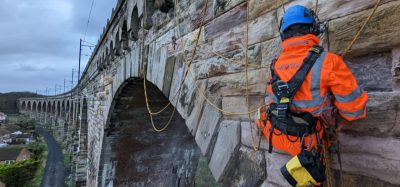
Network Rail’s Eastern Region launches new partnership to streamline infrastructure improvement work over the next five years
One response to “back to the future – learning lessons from our rail’s past”.
I agree with what you say and I was so pleased to see your comments on Brunel v Stephenson, something I often mention, especially when referring to HS2. I am also a great believer in KISS and standardisation, but I believe we have such a mixed fleet that introducing Hydrogen powered trains in certain areas would be no bad thing.
In particular, the Tyne and Wear Metro, which is non standard anyway, for which the proposed replacement rolling stock is Independently Powered EMUs. In the write up, it seems the batteries are there to provide for cases of overhead cable failures – treating the symptom and not the cause. The overhead power system is non standard and is the most unreliable part of the Metro system, so getting rid of it and using Hydrogen powered trains I believe, is the way to go.
With regard to fuelling and storage, there is plenty of experience out there, such as Aberdeen buses
Leave a Reply Cancel reply
Your email address will not be published. Required fields are marked *
This site uses Akismet to reduce spam. Learn how your comment data is processed .
© Russell Publishing Limited , 2010-2024. All rights reserved.
Website development by e-Motive Media Limited .
Privacy Overview
This website uses cookies to improve your experience while you navigate through the website. Out of these cookies, the cookies that are categorised as "Necessary" are stored on your browser as they are as essential for the working of basic functionalities of the website. For our other types of cookies "Advertising & Targeting", "Analytics" and "Performance", these help us analyse and understand how you use this website. These cookies will be stored in your browser only with your consent. You also have the option to opt-out of these different types of cookies. But opting out of some of these cookies may have an effect on your browsing experience. You can adjust the available sliders to 'Enabled' or 'Disabled', then click 'Save and Accept'. View our Cookie Policy page.
Necessary cookies are absolutely essential for the website to function properly. This category only includes cookies that ensures basic functionalities and security features of the website. These cookies do not store any personal information.
Performance cookies are includes cookies that deliver enhanced functionalities of the website, such as caching. These cookies do not store any personal information.
Analytics cookies collect information about your use of the content, and in combination with previously collected information, are used to measure, understand, and report on your usage of this website.
Advertising and targeting cookies help us provide our visitors with relevant ads and marketing campaigns.
Academia.edu no longer supports Internet Explorer.
To browse Academia.edu and the wider internet faster and more securely, please take a few seconds to upgrade your browser .
Enter the email address you signed up with and we'll email you a reset link.
- We're Hiring!
- Help Center

The fragmentation of a railway: A study of organisational change in British Rail

Related Papers
Journal of Management Studies
David Parker
Andrew Pendleton
Applied Geography
Richard Gibb
Critical Perspectives on Accounting
Robert Jupe
Nikita Cherkashin
This work aims at assessing the current state of the railways in the United Kingdom, with a goal of assessing what would make it better for businesses and people. The study is extremely important especially today, since the Labour Party has proposed renationalisation (BBC, 2018), which would be a dramatic change for the businesses operating in the industry. The study identifies the problems that exist within the industry, which affect businesses and general public in negative way. The work analyses the railroads industry in the UK with a focus on franchised passenger train operators. The research was conducted to evaluate the impact of privatisation, suggestions were also made concerning possible improvements. The work analyses the industry both from the perspective of public and the business, but it predominantly focuses on the strategic management issues.
Sean McCartney
Journal of Transport Geography
Ricardo Recht
Public units that have been through a deregulatory process operate in a new market, see their legal framework radically altered, have to fight for customers and to generate their own resources. Such changes affect the way a company operates and obviously also affect the culture an organisation has. This study illustrates how the organisational culture of Ferrocarriles Argentinos, an Argentinean state-owned-enterprise, was transformed as a consequence of the company's partitioning and subsequent transfer into private hands. The case provides a good example of how a weak and dysfunctional culture was re-oriented towards an emphasis on customers, cost-reduction and efficiency. It also provides an interesting example for the management of ongoing as well as future privatisation processes. The insights gained through this study could find application within organisations that, though belonging to the private sector, have been heavily regulated and are trying to get rid of the pernici...
Business History
Financial Accountability and Management
RELATED PAPERS
Archaeological and Anthropological Sciences
Alexander Fantalkin , Stefanos Gimatzidis , Anno Hein , Udo Schlotzhauer
Paola Martínez
Pradnya kartika
judith davila
candra novita
Z vrcholu na okraj. Elity a marginalizované skupiny v dejinách našich miest.
Identità, genere e diversità Una Guida per i genitori
Fondazione Hallgarten - Franchetti Centro Studi Villa Montesca
Between the Keys: A publication of the JALT materials writer's SIG
Neil Heffernan
Revista de Informação Legislativa do Senado
Murilo Avelino , Ravi Peixoto
Genesis Ferrera
PATH research report
Ashkan Sharafsaleh
Information Systems Frontiers
Marjan Kuchaki Rafsanjani
Restu Ilham
The Journal of Chemical Physics
Murali Palla
Vanina Cambiaggi
ATTILA TOROK
Carl During
Artificial Intelligence and Machine Learning Applications in Civil, Mechanical, and Industrial Engineering
Gebrail Bekdaş
The Journal of Membrane Biology
Aritri Dutta
Arsitektur Universitas Pandanaran Jurnal
SyArif Hidayatullah
Clarence Faye D E L E M O S Bobis
- Mathematics
Prof. Dr. Mohamed Shaban Zaky
Mutation Research/Genetic Toxicology and Environmental Mutagenesis
maja jazvinscak jembrek
Transplantation Proceedings
Dariusz Zadrożny
Sándor Klein
Sukhendu Kar
Journal of King Abdulaziz University-Engineering Sciences
عبدالعزيز غالب عبدالعزيز
Beyond the clouds
Prince Adewale
RELATED TOPICS
- We're Hiring!
- Help Center
- Find new research papers in:
- Health Sciences
- Earth Sciences
- Cognitive Science
- Computer Science
- Academia ©2024

IMAGES
VIDEO
COMMENTS
Case 8 The British Rail case study: Learning from the past? Patrick Dawson In 1971, British Rail (BR) decided to invest £13 million (1971 prices) in a new computer system to improve the performance of its freight operations.
For the British rail case, we find it having difficulties in coping with the privatization, Evans (2007) states that it can be advantageous as well as lead to negative impacts due to privatization. According to Godward (1998), Britain Rail's turning to privatization as well as franchising impacted the company negatively.
CASE 8.1 THE BRITISH RAIL CASE STUDY: LEARNING FROM THE PAST? In 1971, British Rail (BR) decided to invest £13 million (1971 prices) in a new computer system to improve the performance of its freight operations. Having considered a variety of options, including the possibility of developing a system 'in-house', BR decided to purchase ...
The Great Western Railway (GWR) was a pioneer in the development of railways in England and Wales. The engineering geniuses, Isambard Kingdom Brunel and Daniel Gooch, helped shape and develop elements of railway engineering that are still current today. It is certainly true that there is nothing new in history, however learning from the past ...
1 | P a g e Case 7.1: The British Rail Case Study: Learning From the Past? In 1971, British Rail (BR) decided to invest £13 million (1971 prices) in a new computer system to improve the performance of its freight operations. Having considered a variety of options, including the possibility of developing a system 'in-house', BR decided to purchase software already developed and proven in ...
The British rail network was privatised in the mid- to late 1990s. However, the sector was heavily regulated and not permitted to evolve according to market processes. Indeed, the government imposed a complex and fragmented structure on the industry which ran counter to traditional railway practices.
The British rail network has never at any point in recent history managed to cover its costs from passenger fares. Government in recent years has reportedly set a target of recovering 75% of costs from passengers, a figure achieved only once since privatisation (BBC, 2013).Ticket prices under both public and private ownership have been subject to regulation in an effort to balance public ...
British Rail's "Age of the Train" campaign, ... Past and Present in the Contemporary Railway Industry", Sociology 33:4 (1999) 725-46. Google Scholar. ... A Western Australian case study. Show details Hide details. Bobbie Oliver. The Economic and Labour Relations Review. Jan 2014.
Liberalisation of passenger rail services. Centre on Regulation in Europe (CERRE) asbl Rue de l'Industrie 42 Box 16 - B-1040 Brussels - Belgium Ph: +32 2 230 83 60 - Fax: +32 2 230 83 70 - [email protected] www.cerre.eu. Liberalisation of passenger rail services. Case Study - Britain.
Learning from the past. A new online archive of accidents to Britain's railway workers between 1889 and 1939 seeks to remember those injured and killed - but also helps us to learn lessons about ways of changing and improving workplace safety culture, attitudes and practices. Over the last 66 years, the British Safety Council has advocated ...
Case 7.1: The British Rail Case Study: Learning From the Past? In 1971, British Rail (BR) decided to invest £13 million (1971 prices) in a new computer system to improve the performance of its freight operations. Having considered a variety of options, including the possibility of developing a system 'in-house', BR decided to purchase software already developed and proven in railway ...
Case 7.1: The British Rail Case Study: Learning From the Past? In 1971, British Rail (BR) decided to invest £13 million (1971 prices) in a new computer system to improve the performance of its freight operations. Having considered a variety of options, including the possibility of developing a system 'in-house', BR decided to purchase software already developed and proven in railway ...
Demands on the rail network are increasing, in the past year there were more than 1.3 billion journeys made across the network, more than at any point since the 1920s when the network was twice the size. To meet increased demand we have provided a million more trains compared to just 5 years ago. However with the latest predictions showing that ...
Case 7: The British Rail Case Study: Learning from the Past? Student - 19694144 Celine Kazzi. What would you identify as the critical factors that contributed to the successful implementation of the TOPS system?
Broadbent, J. (1992) 'Change in organisations: a case study of the use of accounting information in the NHS', British Accounting Review, vol. 24, no. 3, 343-67 Broadbent, J. and Laughlin, R. (1998) 'Resisting the "new public management" Absorption and absorbing groups in schools and GP practices in the UK', Accounting, Auditing and ...
UK, and of Europe. King's Cross is the biggest inner-city transit interchange in London, linking six metro lines at one venue. King's Cross Central combines two major train stations (International high speed Eurostar and domestic) and is also 247 Urban Land Institute (ULI) (July 2014). ULI Case Studies: King's Cross. Retrieved
Case 7.1: The British Rail Case Study: Learning From the Past? In 1971, British Rail (BR) decided to invest £13 million (1971 prices) in a new computer system to improve the performance of its freight operations. Having considered a variety of options, including the possibility of developing a system 'in-house', BR decided to purchase software already developed and proven in railway ...
Asked by pallavit997. Case 7.1: The British Rail Case Study: Learning From the Past? In 1971, British Rail (BR) decided to invest £13 million (1971 prices) in a new computer system to improve the performance of its freight operations. Having considered a variety of options, including the possibility of developing a system 'in-house', BR ...
Running head: CASE STUDY Stanley Abstract British Rail invested 13 million pounds in a new computer system to improve their freight operations and the performance of its systems. In this paper I will discuss what critical factors contributed to the success of the new system, the advantages and disadvantages of the task force used, and how important context and culture are when understanding ...
Case 8.1 The British Rail case study: Learning from the past? Patrick Dawson In 1971, British Rail (BR) decided to invest £13 million (1971 prices) in a new computer system to improve the performance of its freight operations. Having considered a variety of options, including the possibility of developing a system 'in-house', BR decided to purchase software already developed and proven in ...